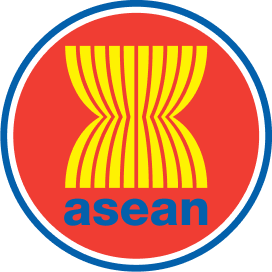

For the full report, please download the Flagship Report
EXECUTIVE SUMMARY
- The Southeast Asia region is one of the world’s highest-risk hotspots for infectious disease emergence and re-emergence, exacerbating the possibility of Public Health Emergencies of Concern – a threat to regional health security. Regional health security instability is a major concern due to its impact on sectors other than health.
- Public Health Emergency interventions are critical to addressing regional health risks and must be tailored to the region’s unique risk factors and challenges. These actions may include developing smart disease surveillance or epidemic awareness at national and regional levels, strengthening Public Health Emergency preparedness, improving Public Health Emergency infrastructure and health worker capacity, ensuring collaborative and intersectoral action, implementing social protection related to health emergencies, and enhancing digital transformation of health
- ASEAN and its Member States can take various actions to strengthen regional health security. These recommendations include investing in various surveillance systems to improve smart surveillance, aligning Public Health Emergency initiatives to minimise redundancy, maintaining and strengthening commitment to Public Health Emergency management, and optimising Big Data and information-sharing systems at regional and national levels.
Introduction
Background, Objectives, Methodology, and Limitations
This report aims to review the trends and foresight of PHE through the presentation of the aims and progress of the ASEAN Member States (AMS) to support the health and sustainable economic growth of the region. The report will identify challenges and opportunities, both prevailing and emerging, that the AMS should overcome, explore, and capitalize on and provide an overview of regional progress vis-a-vis the ideals above.
This report was written using various methodologies: content analysis, comparative or gap analysis, and descriptive analysis for quantitative data. Each methodology was used to compare and analyze secondary data to give a perspective on phenomena in ASEAN and its Member States.
We acknowledge several limitations in writing this Trend Report, such as unequal capacity and availability, with some data being available in several, but not all AMS, with some being outdated or incomplete. Therefore, this report’s internal validity should be interpreted accordingly.
Section 1
Foresight into Public Health Emergencies of Concern
Among the variety of health threats, emerging (EID) and re-emerging (RID) infectious diseases, including deliberately emerging diseases, are the prime public health concern globally (see Figure 1.1). Hence, the foresight to emerging diseases and PHE is essential to strengthening regional health security.
1.1 Threat of Emergence (EIDs) and Re-emergence (RIDs) of Infectious Diseases
ASEAN countries are known for their susceptibility to the re-emergence of infectious diseases (EIDs and RIDs). In 2004, the highly pathogenic Avian Influenza A (H5N1) virus outbreak reached over 250 deaths across Cambodia, Indonesia, Lao PDR, Thailand, and Viet Nam. Moreover, the Pandemic Influenza A (H1N1) virus in 2009 impacted over 55.000 people and caused over 300 deaths in the region (Miranda et al. 2021, citing Lee 2017).
The infectious burden of diseases in Southeast Asia (SEA) is primarily catalyzed by respiratory and intestinal infections (Coker 2011, p.2). Malaria is still endemic in most ASEAN Member States (AMS), with endemic transmission in Cambodia, Indonesia, Lao PDR, Myanmar, the Philippines, Thailand, and Viet Nam (Yek et al. 2021, p.3). Dengue is also a leading risk in ASEAN, with an unprecedented dengue outbreak in 2019 in Malaysia, Indonesia, the Philippines, Thailand, Viet Nam, Cambodia, and Lao PDR (WHO 2022a).
Several key factors are increasing ASEAN’s vulnerability to EID and RID. If not managed appropriately, this will eventually escalate into a PHEOC and cause instability to regional health security, impacting countless non-health sectors (see Figure 1.2). The interconnectedness of risk factors, EID and RID, regional health security, and impacted non-health sectors are connected with variables of Social Determinants of Health (SDOH). The SDOH are defined as the conditions in which people are born, grow, live, and work and are categorized into five key determinants: Education, Health and Health Care, Social and Community Context, Neighborhood and Built Environment, and Economic Stability (CDC, 2020). Several risk factors related to health (e.g., high-risk health behavior and human susceptibility to infections) and non-health (e.g., ecological condition, urbanization, and conflict and famine) have relation to SDOH. Furthermore, the non-health impact of regional health security instability (e.g., economic instability and loss of education) is also part of SDOH. It is also worth noting that these impacts on the economy, education, and inequities to vulnerable groups may also affect the non- health-related and health-related risks of EID and RID.
1.2 Key Drivers and Related Risks
The health and non-health-related risks contribute to emerging diseases in the region. The unique interaction of the epidemiological triad (i.e., infectious agents, hosts, and environments) and SDOH also affected the development of these risks.
1.3 Non-Health Sector Impacted by Regional Health Instability
EIDs and RIDs escalate the threats to ASEAN’s health security, which is detrimental to non- health-related sectors (see Figure 1.2). Unstable health security causes economic instability through fiscal impacts resulting from high expenditure to manage PHE. The pandemic inflicts extreme poverty and increases population vulnerability. Asian Development Bank reported that the COVID-19 pandemic pushed 4.7 million people in the SEA region to extreme poverty in 2021. Furthermore, a report on ASEAN households indicated that the pandemic caused an income decline for 73% of sample households (Morgan and Trinh 2021, p. 12). There is also a concern for the ‘lost generation’ of children due to ineffective education systems. Surveys showed that 46% and 52% of children in Myanmar and the Philippines stopped attending school during the pandemic owing to inadequate internet connection and a lack of computers or tablets (ibid.).
Section 2
Public Health Emergency Measures
2.1 Intelligent Surveillance
Intelligent surveillance, similar to epidemic intelligence, is the systematic collection and collation of information from various sources, which is then validated and analyzed to monitor and predict health events (ECDC 2021). It is vital to mitigate and ensure timely and evidence- based responses to PHE. The Whole Genomic Surveillance (WGS) network and Health Impact Assessment (HIA) for climate change are a few possible initiatives to support intelligent surveillance. Genome sequencing has brought tremendous benefits for overcoming the limitations of conventional methods in therapy, disease control and prevention, and vaccine development (Chauhan et al. 2020). WHO has launched a global genomic surveillance or WGS strategy that focuses on the role of genomics as a timely and appropriate global surveillance system. It provides a deeper understanding of pathogens through genomic sequence data collected from representative populations to detect evolution and monitor trends and the spread of pathogens (WHO 2022b). WGS can track the spread of pathogens, monitor changes in the genetic code and provide information on the early emergence and spread of AMR. Its increasing affordability offers the opportunity to improve infectious disease surveillance and AMR analysis (Yam et al., 2019). Thus, WGS- based surveillance has been rapidly rolled out across the European Region, as envisaged in the European Centre for Disease Prevention and Control roadmap (ECDC 2019). In the ASEAN region, Singapore’s research groups have pioneered WGS usage on drug- resistant pathogens (Yam et al. 2019, p.4)
The WGS integration to genomic analysis in the Philippine Genome Center (PGC) is also proceeding, particularly for antibiotic resistance surveillance. Malaysia also continues to advance its Whole Genome Sequences Analysis by increasing its equipped facilities. Integrated WGS emphasizing data sharing between nations is underway at the regional level. To promote this development, the ASEAN Diagnostics (Dx) Initiative generated webinar series introducing the Next Generation Sequencing for virus surveillance. The ASEAN- UK partnership further supports this through knowledge and experience sharing of WGS.
The HIA for climate change is advocated as a vital tool needed to systematically identify and quantify the effects of climate change on public health and to evaluate the impact of disease-specific adaptation and mitigation measures (Ammann et al., 2021, p.1). HIA is a combination of procedures, methods, and tools by which a policy, program, and project may be judged regarding its potential effects on the population’s health. In 2010, Thailand was assigned to build HIA’s capacity in AMS as a lead country. The first phase of HIA implementation in ASEAN involved building awareness and establishing the HIA framework. The second phase emphasizes the enforcement of regional initiatives and the need to understand the gaps in workforce capacity for HIA implementation.
Digital participatory surveillance is another tool to support a real-time intelligent surveillance system. It empowers citizens to participate in surveillance through online reporting ─reconfirmedandrecordedbybig-datanetworks. Currently, no formal initiative is directly related to digital participatory surveillance at the regional level. However, ASEAN’s initiatives (e.g., Emergency Operations Center Network) align with digital participatory surveillance system. At the national level, Thailand implemented digital surveillance through the Participatory One Health Digital Disease Detection (PODD) in Chiang Mai, using applications to report unusual diseases in backyards, wild animals, and humans. PODD mobile app successfully recorded thousands of abnormal events reported by volunteers (Ending Pandemics 2022). Optimizing diverse types of surveillance will support regional intelligent surveillance systems.
2.2 Public Health Emergencies Preparedness
Continuous preparedness, planning, capacity building, and testing mechanisms at national and regional levels are crucial to ensure an efficient response to PHE. ASEAN must implement measures to mitigate PHE risks to respond efficiently to health emergencies. Building a system within the AMS and the region is essential to strengthen PHE preparedness. ASEAN has developed the ASEAN Strategic Framework for Public Health Emergency as a strategic map guiding health security programs development in AMS and efficiently preparing for and mitigating PHE and biosafety risks.
Early warning systems (EWS) for PHE have become crucial, especially during an outbreak. EWS provides advanced detection of infectious disease outbreaks, widening the range of response options to contain the outbreak (National Research Council (US) Committee on Climate, Ecosystems, Infectious Diseases, and Human Health 2001, p.86). EWS platforms in AMS are managed mainly by the National Disaster Management Organization, some by the Ministry of Health (GFDRR and The World Bank 2020, p.16). Some EWS is also integrated into their EWS platforms for multi-hazard, while others are standalone platforms (ibid.). Furthermore, supporting data reporting for EWS, innovative technologies for contact tracing have been adopted in AMS to identify possible contacts with infected individuals. Although AMS have adopted country-level contact tracing, regional contact-tracing methods have not been developed. Data gaps for the EWS data reporting and timeliness of disease surveillance updates are still apparent in the AMS due to wide-area coverage in some countries and insufficient infrastructure, particularly in hard- to-reach areas. The use of contact tracing also emerges as a challenge and has implications for human rights, particularly the right to data privacy and protection.
On the country level, AMS have developed mechanisms to ensure risk assessment and communication. The National Focal Point or International Health Regulation focal points utilize existing national structure and regional mechanisms. It may conduct a risk assessment soon after receiving a health-related incident report to predict the current health situation and help determine the proper disease eradication strategy. Risk assessment and communication are accommodated in the ASEAN Strategic Framework for Public Health Emergency 2020.
The Declaration of the 7th ASEAN Health Ministers Meeting and Joint Statement of the Special ASEAN Plus Three Summit on Coronavirus Disease 2019 (COVID-19) emphasized methods for strengthening PHE preparedness. ASEAN has established the ASEAN Emergency Operations Center (EOC) Network for Public Health as a platform to share information promptly through various communication mechanisms. The ASEAN BioDiaspora has also been developed to build regional capacity in big data predictive analytics. The platform provides updated reports on national risk assessments, readiness, and response planning efforts. Furthermore, ASEAN Risk Assessment and Risk Communication Center, platforms for risk assessment and communication, are established to help disseminate preventive and control measures, including combating false news and misinformation.
2.3 Strengthening PHE Infrastructure & Capacity of Health Workers
COVID-19 has exposed the inequities and capacities of health infrastructures to manage PHE in ASEAN. Most health systems have been underprepared and overwhelmed. Therefore, strengthening PHE infrastructures (e.g., infrastructure for surveillance systems, emergency facilities, and laboratories) is imperative. These emphasize sustainable development of vaccines, therapeutics, and diagnostics (VTD) tools, laboratory capacity enhancement, and the health workforce’s capability improvement to manage the infrastructures.
Most AMS have insufficient systems to access or develop VTD tools. A study revealed that the region heavily depends on imported diagnostics (The Academy of Medical Science 2019, p.6). To improve these, the Joint Statement in the 9th ASEAN Plus Three Health Ministers Meeting in 2022 showed the member states’ commitment to building a regional supply chain and self- reliance for VTD tools.
ASEAN founded the ASEAN Network for Drugs, Diagnostics, Vaccines, and Traditional Medicines Innovation to promote ASEAN-led health product innovation. Later, the ASEAN Dx Initiative was established to commercialize and make locally-developed diagnostic products available, with The Biotek-M Dengue Aqua Kit and ASEAN Sero-surveillance study as its projects.ASEAN also harmonizes regulations for diagnostic tools, supports local manufacturers, and develops and adopts several diagnostic tools. However, challenges persist, including the limited number of local manufacturers and access to samples, particularly for neglected diseases.
Local vaccine availability is key to vaccine self-reliance. Most AMS has conducted related research and development (R&D) with 13 manufacturers in Indonesia, Myanmar, Singapore, Thailand, and Viet Nam (ASEAN 2021, p.17). The ASEAN Vaccine Baseline Survey (AVBS) divided AMS into vaccine- producing (Indonesia, Myanmar, Singapore, Thailand, and Viet Nam) and non-vaccine- producing (Brunei Darussalam, Cambodia, Lao PDR, Malaysia, and the Philippines) countries. Based on the AVBS, Thailand and Viet Nam have a high capacity for vaccine R&D. In contrast, Indonesia has only limited facilities, with one vaccine candidate developed despite PT Bio Farma presence, one of the largest pharmaceutical companies in SEA.
The Regional Strategic and Action Plan for ASEAN Vaccine Security and Self-Reliance provides the platform for collaborative actions. It may support the regional vaccine hub establishment to deploy and develop vaccines in the region. Collaboration of AMS and pharmaceutical companies in vaccine manufacturing can facilitate technology and knowledge transfer (Yean 2022, p.4). However, limited access to samples, capacity and resource disparities, imported ingredients usage (OECD 2021, p.7), and the low trust in homemade vaccines (Seah et al. 2022, p.14) hamper the growing achievements.
Adequate laboratory capacities are vital in strengthening PHE measures. There are laboratory capacities disparity among AMS. Cambodia, Lao PDR, and Myanmar struggle with essential laboratory services. In contrast, Indonesia, Malaysia, Singapore, and Thailand have advanced research capacity (Miranda et al. 2021, p.1142). The ASEAN Strategic Framework for Public Health Emergency stated the region’s endeavors to improve AMS’ laboratory capacity and network through the Regional Public Health Laboratories Network.
ASEAN must also invest in equipping health workers to manage PHE infrastructure. In the region, the underwhelming amount of publicemergencies-trained health workers has been a dominant theme throughout the pandemic. Although various training programs continue to be developed, health workers trained in emergencies are poorly distributed and have diverse skill standards. The ASEAN Comprehensive Recovery Framework listed several initiatives to manage these issues, including training for pandemic handling and providing scholarships for AMS students.
2.4 Collaborative and Multi-Sectoral Actions
One Health is an approach to promoting a holistic multidisciplinary approach at the animal-human- ecosystem interfaces (Gongal, 2013, p.114).
One Health recognizes the need to promote a culture of working together in a sustainable way to address health risks at the human-animal interface, particularly in resource-constrained countries (ibid.). One Health approach in the ASEAN region supports multi-sectoral actions and ensures the sustainability of the ASEAN Center for Public Health Emergencies and Emerging Diseases (ACPHEED). It is essential to address shared health threats by recognizing the interconnection between people, animals, infectious agents, and the environment. The One Health approach has also been affirmed by AMS through the 15th ASEAN Health Ministers Meeting Joint Statement and integrated into diverse initiatives, including its adoption to tackle AMR.
Integrating the One Health approach requires collaboration between the national security apparatus, travel and logistic sectors, agriculture and food supply chain actors, and health departments to respond to health hazards. Information and intelligence sharing about the pathogen and exposure will be necessary to support the public health response (Cicero et al. 2019, p.7). This collaboration expands the perspective needed to anticipate the broad range of impacts posed by biological threats (ibid.). It also supports the recovery action plans in the region, including collaboration to develop a regional checkpoint system at countries’ entry points connected to the regional surveillance system, as seen in the European Union Healthy Gateways.
The ASEAN Health Ministers’ Meetings have implemented mechanisms for health cooperation. Additionally, by establishing the Regional Action Plan on Healthy Lifestyle 2020, ASEAN calls for intersectoral links between ASEAN’s departments, suggesting that solutions to health threats must be solved in parallel to other areas of attention (Lamy and Phua 2012, p.7). Initiations for sustainable joint procurement and a co-financing for joint action have been done through the COVID-19 response fund to support AMS in managing COVID-19 transmission and safety protection.
Health security committee development is essential to trigger regional response and enhanced coordination of risk communication. ACPHEED serves as a center of excellence and a regional hub to prevent, detect, and respond to PHE. The ACPHEED’s roles include facilitating the development of joint regional surveillance and laboratory response, receiving initial public emergency reports, coordinating with relevant bodies to facilitate intersectoral coordination, serving as the repository of information regarding PHEOC, and coordinating research and development for PHE (Miranda et al. 2021, p.1142). However, future development of the ACPHEED needs to address diverse health protocols and risk tolerance between AMS and the limited funding mobilization for ACPHEED, especially those provided by regional funding.
2.5 Social Protection in Health
Health financing strategies vary across AMSs. They range from tax-funded national health systems in Brunei Darussalam, Malaysia and Thailand, to contributory social health insurance schemes (SHI) in Cambodia, Indonesia, the Philippines, Singapore, Thailand and Viet Nam, to community-based health insurance in Myanmar. Higher-income countries have higher levels of health care and service delivery due to a multi-layered health financing system. Systems include tax-financed subsidies, basic social health insurance levels, mandatory individual savings accounts managed by the government, and a government-established endowment fund that provides a safety net for health expenditures (ILO 2015).
However, nations with a significant informal sector struggle to attain universal coverage through contributory programs. Vulnerable households have a low rate of healthcare usage due to the high out-of-pocket (OOP) costs and inaccessible treatments. Households in Malaysia, for example, face substantial OOP expenses, with OOP expenditure being the second highest source of health financing after the Ministry of Health in 2019, placing households at risk of poverty (Ministry of Health Malaysia 2021, p.20; Mohd Hassan et al. 2022). In 2015, out-of-pocket spending in Cambodia, Myanmar, and the Philippines exceeded 50%., The Philippines has a sizeable OOP expenditure and fiscal deficit (ADB 2022, p.8).
Meanwhile, Thailand has excellent health coverage, service quality, and financial protection. Shifting from solely contributory schemes to a combination of revenue and social insurance funding has allowed social protection expansion. However, there is still a significant service gap due to a shortage of healthcare workers.
Regarding healthcare access deficiencies, Indonesia and Viet Nam score about average (ILO 2015). Indonesia and Viet Nam provide subsidized optional or mandatory coverage for self-employed employees (ILO 2019). For example, Indonesia has the BPJS Health program, the health sector’s social protection program organizer, which is one of five National Social Security Systems (BPJS Health 2018).
Lower-income nations, such as Lao PDR and Myanmar, provide modest health care through various local schemes. In Lao PDR, social health protection is provided by the health insurance branch, voluntary health insurance for self- employed workers, and the Maternal and Child Health program for new mothers and children under the age of five. In Myanmar, the primary plan is the Social Security Board’s Medical Care Scheme, covering private-sector workers. Both Lao PDR and Myanmar are working on merging current projects and creating a national social health insurance system. In addition, although Cambodia has made progress on social health protection schemes, health coverage is still inadequate in several ways, including population coverage, service availability, and quality.
Regionally, ASEAN has long been committed to ensuring social protection for all. The region adopted the ASEAN Declaration on Strengthening Social Protection in 2013 and the Regional Framework and Action Plan in 2015 for an integrated and cross-sectoral approach to social protection delivery and to address developing concerns and difficulties. It is also incorporated into the ASCC strategic measures, emphasizing improving access to and sustainability of social services.
The ASEAN Senior Officials Meeting on Social Welfare and Development promotes the well- being and quality of life of the elderly, children, and other vulnerable populations. The goals are achieved through social protection as cross- cutting issues require a coordinated and holistic strategy engaging multi-sectoral stakeholders (ASEAN 2020). Furthermore, the ASEAN Plus Three Health Ministers Meeting (APTHMM) reiterated their commitment to achieving SDGs, including financial risk protection, access to high-quality critical healthcare services, and affordable access to vital medications and immunizations. The 8th APTHMM also pushes ASEAN and three senior health officials with accelerating progress toward universal health coverage (UHC) in all nations.
2.6 Digital Health Transformation
Data services include data standardization, regional data-sharing infrastructure, and digital computing platforms capable of modeling and simulation. The COVID-19 pandemic underscored the importance of integrated and standardized real-time data for decision- making. These data, however, are left scattered and unstandardized. Therefore, standardization must unlock the potential features of untapped data sources, increase interoperability, and allow portability (Soucie 2012).
Data-sharing is one of the prerequisites of informed decision-making. However, concerns about data breaches, misuse, and theft have been running rampant due to data-sharing intensification. As a result, there emerges a need to have a data-sharing infrastructure that ensures data quality while also not jeopardizing the citizens’ privacy. Consequently, building proper institutional arrangements for decisions over data is equally important (Micheli et al. 2020).
In the past, ASEAN introduced the ASEAN BioDiaspora and the ASEAN BioDiaspora Virtual Center (ABVC) to predict, anticipate, and respond to (emerging) public health concerns via Big Data predictive analytics and visualization. The BioDiaspora program links multiple datasets and empowers AMS’s public health capacities through real-time web-based risk assessment tools (the explorer and insight tools). During the COVID-19 pandemic, the ABVC generated risk assessment reports for AMS decision-makers and the public. This report encompasses the dissemination timeline, public health outlook, risk of importation, air travel volume, fatality cases, and travel advisories among AMS in response to COVID-19.
The ABVC and the BioDiaspora tools are initiatives for regional data governance and risk assessment in ASEAN. A data governance model must have several elements; data integration, policy-making, innovation, and tackling societal issues (Micheli et al. 2020). Subsequently, trust between the governing entity and the community or public is pivotal and implied within the framework of this model. In carrying out data-sharing and analytical activities, the entities may collaborate with various institutions, including companies, data intermediaries, research institutions, start-ups, and even small and medium-sized enterprises (ibid.).
ABVC lacks several crucial components for a data governance model: trust and rapport- building, such as accountability, transparency, and community involvement. Apart from relying on government data and information, the ABVC draws data from partner’s databases and news articles–using news articles as data allows the ABVC to bypass some of the issues hindering data analytics (e.g., data standardization and privacy). In doing so, it did not provide citizens with adequate transparency and engagement. For instance, information or documents explaining the details of data retrieval, data- sharing mechanisms, methods of modeling on public information explaining the details of data retrieval, data-sharing instruments, and existing modeling methods are severely lacking. The framework also does not outline ASEAN citizens’ role (e.g., providing or utilizing the data) within the initiative.
The infrastructure of ABVC can store sensitive information in its local storage and distributes results of data analysis (Wirth 2021). It draws anonymous data from government-issued reports and news articles and receives submissions of government-issued publications from the AMS. The data is then assessed through meta-analysis, resulting in ASEAN’s summarized information. The process described previously embodies the elements of safe data, setting, and outputs possessed by data infrastructures known as data enclaves and distributed data analysis. Moreover, the ABVC is prone to collecting duplicate data from the same individuals and is not flexible enough to provide summarization based on needs (Wirth 2021).


















